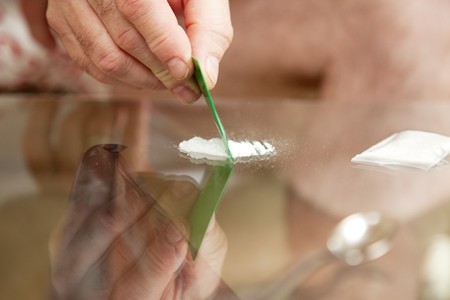Adolescent Delta-9-tetrahydrocannabinol induces long-term neuronal disturbances in dorsal vs. ventral hippocampus
De Felice et al reported in Neuropsychopharmacology (2022) how adolescent THC exposure in a rodent model can induce significant morphological disturbances and glutamatergic signaling abnormalities in the hippocampus. The dorsal hippocampus is critical for cognitive and contextual processing, whereas the ventral region is critical for affective and emotional processing. Adolescent THC exposure induces long-lasting memory deficits and anxiety like-behaviors concomitant with a wide range of differential molecular and neuronal abnormalities in dorsal vs. ventral hippocampal regions.
Editors Note: While these data are in rodents, they provide insights into how THC use in adolescents exerts memory deficits and anxiety-like behavior in adulthood by dysregulation of glutamate signaling in the hippocampus. These data converge with data in humans. The bottom line is: use of marijuana in adolescence is not good for brain function, cognition, and behavior in adulthood.
A NEW VIEW ON MEMORY TO REMEMBER
Steven Ramirez PhD of Boston University gave a talk (8/9/22) on memory for the BBRF hosted by Jeffrey Borenstein President & CEO of the Brain & Behavior Research Foundation. Ramirez showed that positive (food) and negative (shock) memories of different places were stored in different neurons of the hippocampus. If he turned on the positive memories with optical stimulation while a mouse was in a negative memory place and would ordinarily show freezing representing fear behavior, much less freezing occurred with the insertion of the positive memory. Positive memories appear to trump negative memories.
Ramirez found score of genes were activated or turned off in the positive memory cells, some of which, but not all, overlapped with the negative memory cells. Remarkably, the bulk of the unique positive memory genes were related to synaptogenesis and neuroprotection, while the bulk of genes unique to the negative memory cells were related cell death and other toxic factors. Ramirez hopes these data will provide clues to not only helping people with PTSD, but also ultimately providing targets for providing protection against degenerative diseases.
When Ramirez was asked by Borenstein what people could do now, he related his own experience of every morning filling out a form for gratitude and gratefulness for at least 3 things he could be grateful for the previous day or anticipated for the current day. The positive memories that this invoked in him set up his positive and optimistic attitudes for the rest of the day. He recommends this approach of positive memories modulating the current pervasive stressors of the day. For people interested in the details of his experiments summarized above, they should look for the in press articles of Grella et al Nature Communications and Shpokayte et al Nature Communications.
Curcumin Improves Memory and Depression
Recent studies suggest that curcumin, the micronutrient in turmeric that gives Indian curry its bright color, may reduce depression and improve memory.
A 2018 study published in the American Journal of Geriatric Psychiatry by Gary Small, director of geriatric psychiatry at UCLA’s Longevity Center, and colleagues found that a curcumin supplement improved mild, age-related memory loss in people without dementia.
Forty adults between the ages of 50 and 90 received either placebo or 90 mg of Theracumin, a bioavailable form of curcumin, twice daily for 18 months. The participants took cognitive tests at the beginning of the study and every 6 months during the study. Thirty of the participants also received positron emission tomography (PET) scans upon beginning and ending the study to evaluate the appearance of plaques and tangles in their brains.
Participants who received curcumin saw improvements in verbal and visual memory and attention over the course of the study compared to those who received placebo. The curcumin participants also saw mild improvements in mood, and less accumulation of amyloid plaques and tau tangles in the amygdala and hypothalamus, brain areas that play a role in memory and emotion. A few participants had mild gastrointestinal effects after taking Theracumin.
In India, where diets are high in curcumin, there is a lower incidence of Alzheimer’s than in the west, and older people also have better cognitive performance than in the west.
Curcumin has anti-inflammatory, antioxidant, and neuroprotective properties. Researchers speculate that curcumin may reduce brain inflammation, which has been implicated in both depression and Alzheimer’s disease.
A 2017 meta-analysis by Qin Xiang Ng and colleagues of 6 studies of curcumin including a total of 377 patients found that the substance has significant antidepressant effects compared to placebo. Half of the studies also reported improvements in anxiety. No adverse events were reported. Ng’s meta-analysis was published in the Journal of the American Medical Directors Association.
Exercise May Improve Memory
 A recent study suggests that exercising vigorously 20 minutes per day may improve “interference memory,” a type of memory that involves reconciling new learning with information one already knows. (Sometimes older information “interferes” with new learning.) In a 2017 article in the Journal of Cognitive Neuroscience, researcher Jennifer Heisz and colleagues report that performance on a high-interference memory task improved when participants engaged in 20-minute daily sessions of interval training for six weeks.
A recent study suggests that exercising vigorously 20 minutes per day may improve “interference memory,” a type of memory that involves reconciling new learning with information one already knows. (Sometimes older information “interferes” with new learning.) In a 2017 article in the Journal of Cognitive Neuroscience, researcher Jennifer Heisz and colleagues report that performance on a high-interference memory task improved when participants engaged in 20-minute daily sessions of interval training for six weeks.
Heisz and colleagues compared three groups of students: one did interval training, another did both interval training and cognitive training, and a control group did no special training. Both exercise groups performed better on the high-interference memory task than the control group. Those who exercised also had higher levels of brain-derived neurotrophic factor (BDNF), which promotes the growth of new synapses and is crucial for long-term memory.
The researchers suggest that this finding could be useful to seniors facing memory deficits, since only six weeks of exercise improved memory performance. Interference memory tends to decline with age.
Previous research has linked aerobic exercise to better academic performance.
Revising Traumatic Memories in the Reconsolidation Window
 We have previously described in the BNN how therapies can take advantage of the memory reconsolidation window to reduce the power of traumatic memories. Five minutes to one hour following active emotional recall of a traumatic event, a ‘window’ opens during which therapies can revise or extinguish the traumatic memory. A 2017 article by our Editor-in-Chief Robert M. Post and Robert Kegan in the journal Psychiatric Research describes how the reconsolidation window could theoretically be used to prevent recurring depressive episodes.
We have previously described in the BNN how therapies can take advantage of the memory reconsolidation window to reduce the power of traumatic memories. Five minutes to one hour following active emotional recall of a traumatic event, a ‘window’ opens during which therapies can revise or extinguish the traumatic memory. A 2017 article by our Editor-in-Chief Robert M. Post and Robert Kegan in the journal Psychiatric Research describes how the reconsolidation window could theoretically be used to prevent recurring depressive episodes.
The theory is based on the idea that depressive episodes initially stem from stressors, but eventually become ingrained in the brain’s habit memory system. Cognitive behavioral therapy during the memory reconsolidation window might be a good way to disrupt these habit memories.
The memory reconsolidation window has already been used successfully to reduce traumatic memories and even to reduce heroin and cocaine cravings in addiction. The idea in changing traumatic memories, in the words of researcher Göran Högberg in a 2011 article in the journal Psychology Research in Behavior Management, is to “change a reliving intruding memory into a more distant episodic memory.” Post and Kegan suggest that work in depression would have a similar goal, to rework the triggering experience and render the depressive experience “less harsh, severe, [and] self-defeating (guilt-inducing).”
In exploring this new therapeutic approach, Post and Kegan suggest that it might be best to begin with patients whose depressive episodes are triggered by stressors.
The patient would be encouraged to recall the memory of the particular stressor and any emotions related to it. Then they would be prompted to reframe the memory, either by recognizing adaptive aspects of their response, focusing on their youth at the time of the stressor in the case of childhood memories, addressing any guilt the patient may feel, or other techniques used in trauma therapy. Evoking positive feelings during this period via relaxation exercises would be another useful practice.
In addition to targeting stressors that precede depression, the stress of the depressive experience itself could be a target of reframing during the reconsolidation window.
Questions remain, such as whether to target early or more recent memories, and whether this technique would be as useful in reducing manic episodes. Patient characteristics might also affect the success of this type of therapeutic intervention.
Post and Kegan also address how the therapy might be used in different stages of illness, and how it might be combined with other therapies, such as medications or procedures such as repeated transcranial magnetic stimulation (rTMS).
Breathing in Through the Nose Enhances Judgment and Memory
A 2016 study published in the Journal of Neuroscience reported that the rhythm of breathing changes electrical activity in the brain and can improve emotional judgments and recall. Breathing in through the nose seemed to produce benefits compared to breathing out or to breathing in through the mouth.
Participants more easily identified a fearful face if they viewed it while breathing in. They also had an easier time remembering objects they observed while breathing in. The effects were not seen if the participants breathed through their mouth.
The researchers, led by Christina Zelano, reported that there was a major difference in brain activity in the amygdala and hippocampus during inhalation versus exhalation. Breathing in, in addition to stimulating the olfactory cortex responsible for smell perception, seems to activate the entire limbic system, the emotional center of the brain.
High-Dose Vitamin D May Improve Cognition More Than Low-Dose Vitamin D
 Vitamin D deficiency has been associated with dementia and cognitive decline, but supplements may help. In a study of 82 healthy individuals with low vitamin D levels, high-dose vitamin D supplements (4000 IU/day) improved visual/nonverbal memory more than did low-dose vitamin D supplements (400 IU/day) over 18 weeks.
Vitamin D deficiency has been associated with dementia and cognitive decline, but supplements may help. In a study of 82 healthy individuals with low vitamin D levels, high-dose vitamin D supplements (4000 IU/day) improved visual/nonverbal memory more than did low-dose vitamin D supplements (400 IU/day) over 18 weeks.
The 2017 study took place in Canada, where short winter days can make it more difficult to get sufficient levels of vitamin D from sunlight. The higher-dose supplements raised blood levels of vitamin D compared with the lower-dose supplements.
Those who received the higher doses performed better at tests of visual memory such as the Pattern Recognition Memory Task and the Paired Associates Learning Task, but their performance on tests of verbal memory was not significantly different from those in the lower-dose group. This suggests that higher vitamin D levels are particularly important to visual/nonverbal memory.
The study by Jacqueline A. Pettersen was published in the journal Experimental Gerontology.
Single Dose of Modafinil Improved Memory in People in Remission from Depression
 Modafinil is a wake-promoting medication used to treat narcolepsy, but studies have also shown that it can improve cognition in people with schizophrenia or attention deficit hyperactivity disorder. It may also help people with lingering cognitive difficulties after recovering from a depression. A 2016 article in the journal Biological Psychiatry reported that a single 200mg dose of modafinil improved performance on tests of episodic memory and working memory (but not planning or attention).
Modafinil is a wake-promoting medication used to treat narcolepsy, but studies have also shown that it can improve cognition in people with schizophrenia or attention deficit hyperactivity disorder. It may also help people with lingering cognitive difficulties after recovering from a depression. A 2016 article in the journal Biological Psychiatry reported that a single 200mg dose of modafinil improved performance on tests of episodic memory and working memory (but not planning or attention).
The study by researcher Barbara Sahakian and colleagues included 60 patients who had recently recovered from a depression. They took some cognitive tests to establish a baseline of their performance. A week later, they were given either a placebo or a single dose of modafinil, and two hours later they completed the cognitive tests again. The modafinil group performed better on the memory-related tasks.
While side effects were limited, two participants who received modafinil had sleep disturbances that night.
Longer-term studies are needed to determine whether modafinil is safe and effective if taken over a longer period of time. Cognitive dysfunction can interfere with daily tasks such as work or school and put people at greater risk of relapse, so effective treatments have the potential to greatly improve quality of life for people in remission from depression.
Disrupting Memories of Cocaine Use Might Prevent Relapse
Cocaine users who want to abstain from the drug may find that encountering people or places who remind them of past cocaine use can increase their cravings for the drug and lead to relapse. Researchers are studying animals to see if disrupting the link between an environmental cue and the memory of cocaine’s effects could reduce cravings for the drug.
In a 2016 article in the journal Neuropsychopharmacology, researcher Melissa S. Monsey and colleagues reported that in rats, the amnesia-causing natural compound garcinol can weaken the cues that lead to a cocaine-seeking. Garcinol is derived from the rind of kokum (or Garcinia indica) fruit, which is native to the west coast of India.
Monsey and colleagues delivered the garcinol during a period when the rats’ brains were reconsolidating memories that linked an environmental cue with the pleasurable effects of cocaine.
For 12 days, the rats in the study could press a lever and receive an intravenous infusion of cocaine that was paired with a light and a sound. Then the lever stopped working for 8 days. Next, the researchers observed how the rats behaved when the light and sound returned.
The light and sound were meant to remind the rats of the previous times they received cocaine, prompting their brains to reconsolidate the memory linking the light/sound with the pleasurable effects of cocaine.
Half of the rats were given an injection of garcinol during this memory reconsolidation period. While all of the rats continued to seek out cocaine, in the garcinol-treated rats, the light/sound was no longer linked to cocaine. Their cocaine-seeking behavior from then on was unrelated to the light/sound, and the link between the light/sound and cocaine could not be reinstated in these rats.
This research on rats may help clarify how cravings are produced in the brain, and how they might be prevented or treated.
Editor’s Note: In 2012, Yan-Xue Xue and colleagues reported in the journal Science that in humans, psychological techniques can be used to help a patient unlearn the association between an environmental cue and the effects of a drug, using the same theory of the memory reconsolidation period. When patients in recovery from heroin addiction were prompted to revisit memories of heroin use 10 minutes before extinction training (in which they looked at heroin or heroin paraphernalia without receiving the drug), they ended up with fewer cravings for heroin 1, 30, and 180 days later compared to patients who did extinction training without revisiting memories of past heroin use (and thus without opening the memory reconsolidation window, which researchers believe opens 5 minutes to an hour after someone engages in active recall).
Early Marijuana Use Linked To Abnormal Brain Function, Low IQ
 A study of depression and marijuana use found that using marijuana before the age of 17 was linked to abnormal brain function and lower IQ. In a 2016 article in the journal Acta Psychiatrica Scandinavica, researcher Elizabeth Osuch and colleagues described a study that compared four categories of youth: frequent pot users with depression, frequent pot users without depression, those with depression who did not use pot, and healthy individuals who did not use pot. The researchers also compared those who began using pot after the age of 17 to those who began earlier.
A study of depression and marijuana use found that using marijuana before the age of 17 was linked to abnormal brain function and lower IQ. In a 2016 article in the journal Acta Psychiatrica Scandinavica, researcher Elizabeth Osuch and colleagues described a study that compared four categories of youth: frequent pot users with depression, frequent pot users without depression, those with depression who did not use pot, and healthy individuals who did not use pot. The researchers also compared those who began using pot after the age of 17 to those who began earlier.
The main findings were that brain function in the areas of reward processing and motor control differed across the four groups. Depression was linked to deficits in brain function. Marijuana use did not correct these deficits, and in some parts of the brain, worsened them.
Those who had used marijuana before the age of 17 had abnormalities in memory, visuo-spatial processing, self-referential activity, and reward processing. Those who had started using marijuana at younger ages also had lower IQ scores.




